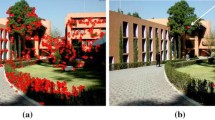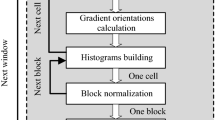Abstract
The implementation of human detection in the embedded domain can be a challenging issue. In this paper, a real-time, low-power human detection method with high detection accuracy is implemented on a low-cost field-programmable gate array (FPGA) platform. For the histogram of oriented gradients feature and linear support vector machine classifier, the binarization process is employed instead of normalization, as the original algorithm is unsuitable for compact implementation. Furthermore, pipeline architecture is introduced to accelerate the processing rate. The initial experimental results demonstrate that the proposed implementation achieved 293 fps by using a low-end Xilinx Spartan-3e FPGA. The detection accuracy attained a miss rate of 1.97% and false positive rate of 1%. For further demonstration, a prototype is developed using an OV7670 camera device. With the speed of the camera device, 30 fps can be achieved, which satisfies most real-time applications. Considering the energy restriction of the battery-based system at a speed of 30 fps, the implementation can work with a power consumption of less than 353mW.
Access this chapter
Tax calculation will be finalised at checkout
Purchases are for personal use only
Preview
Unable to display preview. Download preview PDF.
Similar content being viewed by others
References
Oren, M., Papageorgiou, C., Sinha, P., Osuna, E., Poggio, T.: Pedestrian detection using wavelet templates. In: IEEE Conference on Computer Vision and Pattern Recognition, pp. 193–199 (1997)
Viola, P., Jones, M.J., Snow, D.: Detecting pedestrians using patterns of motion and appearance. International Journal of Computer Vision 63(2), 153–161 (2005)
Cheng, H., Zheng, N., Qin, J.: Pedestrian detection using sparse gabor filter and support vector machine. In: IEEE Intelligent Vehicles Symposium, pp. 583–587 (2005)
Lowe, D.G.: Distinctive image features from scale-invariant keypoints. International Journal of Computer Vision 60(2), 91–110 (2004)
Chang, C.-C., Lin, C.-J.: LIBSVM: a library for support vector machines. ACM Transactions on Intelligent Systems and Technology (TIST) 2(3), 27 (2011)
Freund, Y., Schapire, R.E.: A desicion-theoretic generalization of on-line learning and an application to boosting. In: The 2nd European Conference on Computational Learning Theory, London, UK, pp. 23–37 (1995)
Dalal, N., Triggs, B.: Histograms of oriented gradients for human detection. In: The 2005 International Conference on Computer Vision and Pattern Recognition, Washington, DC, USA, vol. 2, pp. 886–893 (2005)
Zhu, Q., Yeh, M.-C., Cheng, K.-T., Avidan, S.: Fast human detection using a cascade of histograms of oriented gradients. In: Computer Vision and Pattern Recognition (CVPR), pp. 1491–1498 (2006)
Viola, P., Jones, M.: Rapid object detection using a boosted cascade of simple features. In: Computer Vision and Pattern Recognition (CVPR), pp. 511–518 (2001)
Kerhet, A., Leonardi, F., Boni, A., Lombardo, P., Magno, M., Benini, L.: Distributed video surveillance using hardware-friendly sparse large margin classifiers. In: Advanced Video and Signal Based Surveillance (AVSS), pp. 87–92 (2007)
Kadota, R., Sugano, H., Hiromoto, M., Ochi, H., Miyamoto, R., Nakamura, Y.: Hardware architecture for HOG feature extraction. In: Intelligent Information Hiding and Multimedia Signal Processing, pp. 1330–1333 (2009)
Sun, W., Kise, K.: Speeding up the detection of line drawings using a hash table. In: Pattern Recognition (CCPR), pp. 1–5 (2009)
Negi, K., Dohi, K., Shibata, Y., Oguri, K.: Deep pipelined one-chip FPGA implementation of a real-time image-based human detection algorithm. In: Field-Programmable Technology (FPT), pp. 1–8 (2011)
Komorkiewicz, M., Kluczewski, M., Gorgon, M.: Floating point HOG implementation for real-time multiple object detection. In: Field Programmable Logic and Applications (FPL), pp. 711–714 (2012)
Author information
Authors and Affiliations
Editor information
Editors and Affiliations
Rights and permissions
Copyright information
© 2013 Springer-Verlag Berlin Heidelberg
About this paper
Cite this paper
Xie, S., Li, Y., Jia, Z., Ju, L. (2013). Binarization-Based Human Detection for Compact FPGA Implementation. In: Wu, C., Cohen, A. (eds) Advanced Parallel Processing Technologies. APPT 2013. Lecture Notes in Computer Science, vol 8299. Springer, Berlin, Heidelberg. https://doi.org/10.1007/978-3-642-45293-2_9
Download citation
DOI: https://doi.org/10.1007/978-3-642-45293-2_9
Publisher Name: Springer, Berlin, Heidelberg
Print ISBN: 978-3-642-45292-5
Online ISBN: 978-3-642-45293-2
eBook Packages: Computer ScienceComputer Science (R0)




